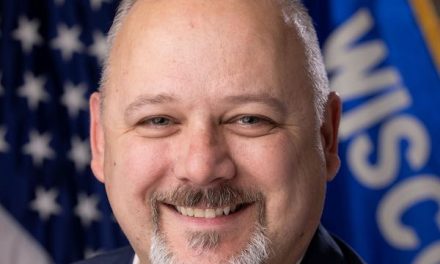
Nursing homes take financial hit from COVID-19

Nursing home associations are concerned about the financial impact of COVID-19 as providers face rising costs, falling revenues and limited cash at hand.
Dozens of nursing homes have closed in recent years across the state. Before the pandemic, long-term care facilities were not in a strong financial position given low Medicaid reimbursement rates, said John Vander Meer, CEO of the Wisconsin Health Care Association and Wisconsin Assisted Living Center.
Facilities have seen a significant increase in costs for personal protective equipment, with as high as a 500 percent increase in some cases, and sometimes double the labor costs that they saw before the pandemic, Vander Meer said.
“If providers don’t get the financial relief that they need soon, the provider community is concerned we may see some facilities have to shut their doors due to a lack of cash flow and staff,” he said. “I think that facility closures are the last thing we should allow to happen during this public health crisis.”
Vander Meer said that the federal CARES Act didn’t allocate much to skilled nursing and assisted living facilities, around 2 percent of their revenue on the Medicare side.
“That means a plastic surgeon in Hollywood has received the same proportional amount as a nursing home with COVID-19 in Milwaukee,” he said. “In terms of the federal money that has actually come to long-term care facilities, it’s been relatively minimal.”
John Sauer, LeadingAge Wisconsin CEO, said they’ve approached policymakers for increases, both for staffing and for personal protective equipment. He said they’ve seen an increase of $347 per patient day for nursing home care and $301 per patient day for assisted living care.
Sauer said that nursing homes could lose between $110 million to $160 million in revenue from the pandemic, based on an analysis from CliftonLarsonAllen.
Up to two-thirds of Wisconsin’s facilities will see a negative cash position within the next 90 days, Sauer said.
Sauer said spending is going up as they buy personal protective equipment. On the staffing side, they’ve had to find workers to cover employees with symptoms of the disease, which is leading to overtime costs. Many organizations are also offering hazard pay.
They’re also seeing a decline in occupancy, which is leading to revenue falls. That’s due in part to hospitals dropping elective care, meaning fewer discharges to skilled nursing facilities.
It’s also partly due to more families caring for loved ones at home, he said. And nursing facilities are limiting communal dining, group activities and visitations, meaning fewer are coming to live there.
“We’re facing a double hit with rising expenditures and declining revenues,” Sauer said.
Department of Health Services Secretary-designee Andrea Palm said they’re still working through how to use the roughly $2 billion in federal money the state has received through the CARES Act.
“We certainly recognize that long-term care, hospitals, rural hospitals are all facing financial challenges because of COVID-19,” Palm said Friday.
Palm added that Evers requested funds from the Legislature for a variety of stakeholders, including long-term care providers.
Legislators went a different direction, allocating $75 million in state money to the Joint Finance Committee for the Evers’ administration to request funding for initiatives not covered by the federal money. The bill passed by the Legislature and enacted by Evers also qualified the state for an increase in Medicaid funding.
Spokespeople for Senate Majority Leader Scott Fitzgerald, R-Juneau, and Assembly Speaker Robin Vos, R-Rochester, did not return requests for comment. Both legislative leaders have painted a bleak picture of state finances in light of declining tax revenues due to the pandemic.
Wisconsin Health News is removing the password on all stories related to the coronavirus. For the latest developments follow us on Twitter at @wihealthnews or check out our website. For complete healthcare coverage, sign up for a free trial to our daily email newsletter.





